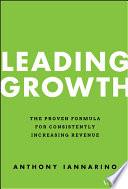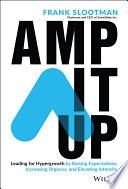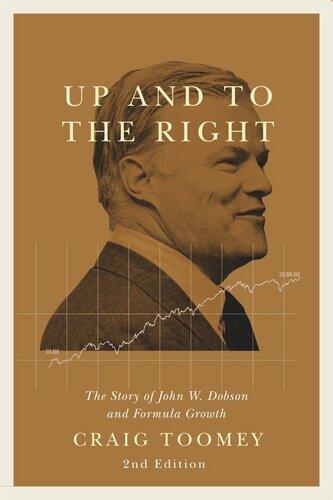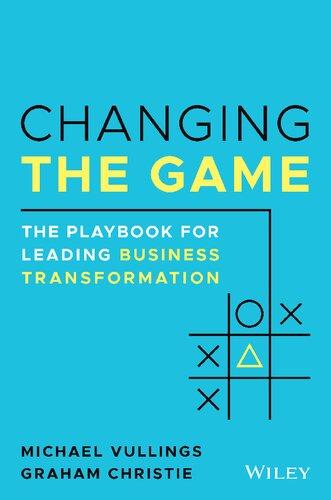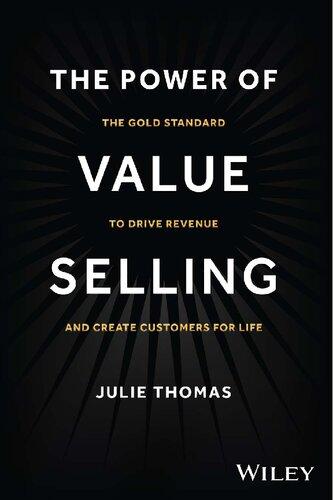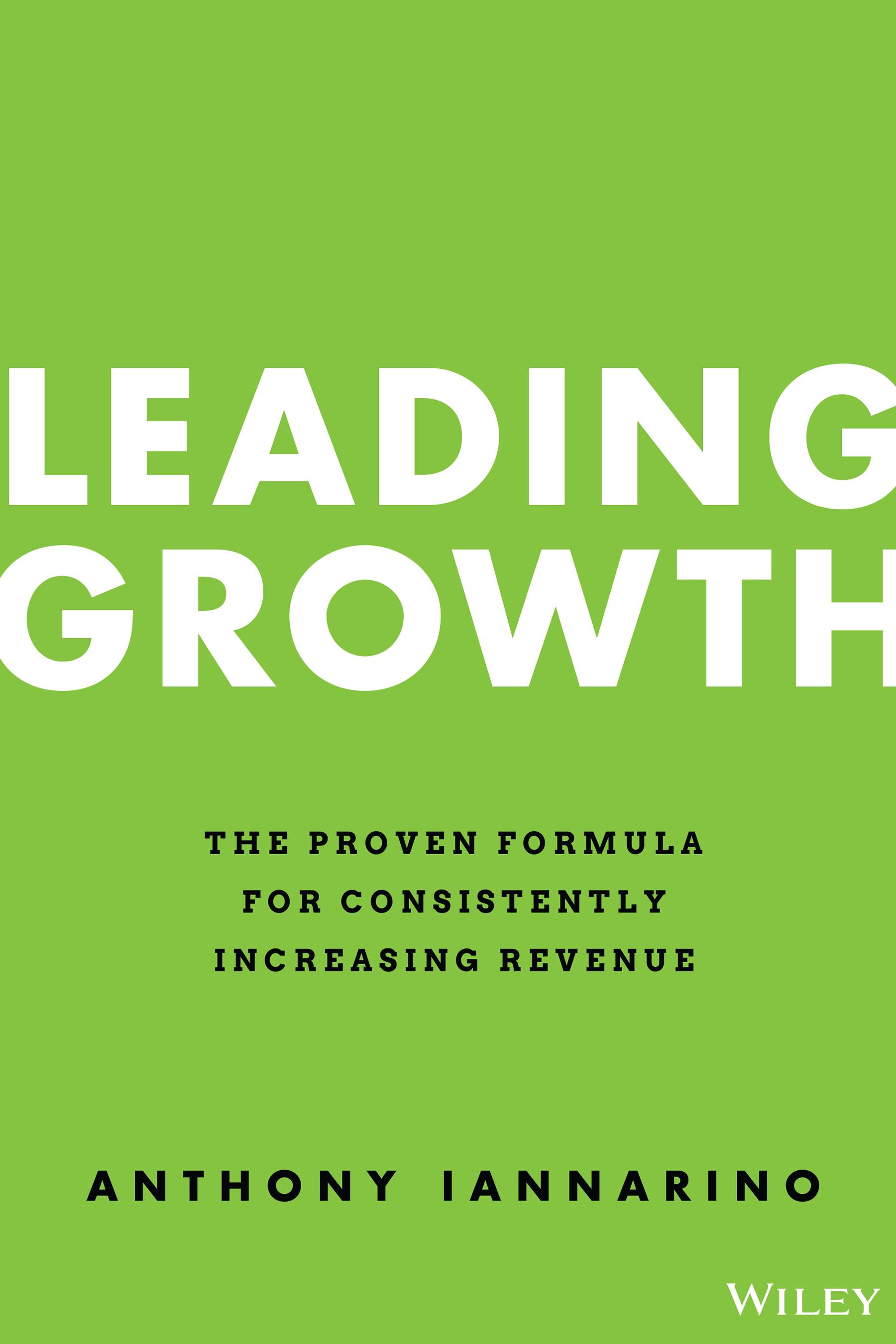Foreword
The keystone, an architectural concept related to the building of an arch, is the stone in the middle that bears the entire weight of the structure. Without the keystone, the arch would collapse.
Over a 20-year career leading sales organizations of various sizes, I have come to recognize the frontline sales leader as the sales organization’s “keystone.” Any program, initiative, even the very sales culture itself, will succeed based on the strength of the sales leadership team. With an ineffective frontline sales leadership team, however, the sales structure is at risk of collapse.
This belief does not minimize the importance of our individual sellers who are putting forth an untold amount of energy and effort each day to support prospects and customers to improve their results. Rather, elite sellers demand elite leaders. Elite leaders are talent magnets who attract, develop, coach, and retain the great sellers who are the difference-makers of an organization. While the role of a sales leader can be called the most critical function in a sales organization, it is also among the most difficult to master. The primary reason for this is that an effective sales leader requires mastery of both selling and sales leadership.
Foreword
Sales and sales leadership are in the same family, yet the roles and skills required to do them well are quite different.
If a sales leader understands leadership without understanding how their salespeople must operate, they will have challenges improving their seller’s effectiveness. This will ultimately cost the leader followership and, eventually, their role.
Conversely, if the leader is a sales expert with limited or no knowledge of leadership, they will be nothing more than a glorified salesperson (to quote my friend, Mike Weinberg, “a hero not a hero maker”) with a lid to their impact that ultimately lands them back in a sales role.
The importance of the function on the success of an organization, combined with the challenges the role presents, makes it all the more curious how little training and ongoing development sales leaders receive in many organizations. The training of a sales leader is often fractional compared to supervisory functions in other areas of a business, and there are many organizations who still do minimal training of their sales leaders.
The driver of this, from my perspective, is a generation of senior sales leaders who were also not trained to lead and carry with them the belief that “I didn’t get trained and I figured it out, so they can too.” This logic affects attrition rates for the role itself, while also impacting the lives of an untold number of sellers who have the misfortune of placing their careers in the hands of an incompetent leader.
I am fortunate to have worked with great people and had success with great teams, though in my first leadership assignment I chose the path of most resistance. I knew little about what I was doing beyond that we were going to move fast and sell a lot. I made every mistake there was to make as a new leader and while (luckily) delivering over quota results, I was winning in spite of myself rather than because of myself.
The turning point in my leadership career was the moment I realized that as a sales leader, I controlled two things and two things alone. The more I focused on exerting control in these two areas at the expense of all others, the more effective I became. The first was who was on my team, and the second, how well I had equipped those people to succeed.
I reached this conclusion while reflecting on my frustration with people on my team who were underperforming. I have always operated with the belief that anything that happens to me is my fault and my responsibility. I determined that if someone on my team was underperforming, it was a byproduct of my decisions, in one of two ways.
If a salesperson was underperforming, it was either because I sent them out into the field unprepared to perform in the role, which was my decision not to adequately prepare them, or because I decided to keep that person in that role after they had proven over a measurable period that they were unable or unwilling to do the things required to perform in the role.
As a leader, if I recruited and selected the best people, I would have the best team. If I relentlessly worked to train and develop my great people, I would have the best team. If I had the highest of standards and enforced those standards, I would have the best team. (Note that the lowest behavior a leader is willing to tolerate is the actual standard, not what is spoken or printed on the wall.)
These were lessons with immense value, and ones through which my life and many other lives could have been improved had I learned them sooner.
It is the importance of the role, the challenge of the role, the lack of training, and the pivotal leadership lessons learned along the way that frame the significance of the book you are holding, Leading Growth.
I have been a long-time reader of Anthony’s work. His daily blog is required reading for all sales and sales leadership professionals. What has always drawn me to Anthony is that while most sales content is a tactical explanation or “do this,” his cerebral style challenges the reader to think about what they are doing and why they are doing it, and ensures appropriate preparation to maximize value in every interaction.
What he has done with Leading Growth is create the ultimate unification of both the art and the science of Sales Leadership. The book embraces the requirements of elite leadership, while not ignoring the reality that there are principles of management that must be upheld in the day-to-day actions of the role.
What makes Leading Growth such a valuable book is that it covers the critical but traditional elements of sales leadership like accountability, training and coaching effectiveness, opportunity reviews, and selecting talent.
Where this book is different and takes the reader to a new level is a dive into the intangible aspects of the role. He takes us through a framework for crafting a vision and communicating it in a way that resonates and wins hearts and minds, and explores how to set standards and nonnegotiables. The reader is taught to distinguish between commitment and compliance along leadership styles and their situational applicability. Even something as critical (but rarely considered) as protecting your team from nonsales work is addressed in Leading Growth.
These lessons are what make this book so impactful. They are the lessons all leaders need to know but are so often overlooked unless learned the hard way.
For new leaders, even those in companies who provide great leadership training, this book establishes a strong foundation to succeed early and sustainably. For a new leader thrown to the proverbial wolves, the experiential recollection of the things elite leaders do has incalculable value.
For an experienced sales leader, you will learn both new techniques and philosophies to add to your repertoire, while being reminded of things you did when you started out but have since taken for granted over time. It will challenge you to master or remaster the fundamentals of the role.
For executives, this book provides a blueprint of skills and expectations to build or elevate an elite frontline leader function, which has immeasurable benefits for any organization.
Leadership carries with it a significant responsibility. When people come to work for us they are making the tacit statement that of all the career options that are available to them, the best decision for their career and their future is to put it in our hands.
As leaders we must be the bridge, through coaching, development, and accountability, from where our people are today to wherever they want to go in the future. If our people believe we represent that bridge, they will stay and grow with us. If we shirk our responsibility, our people will go elsewhere to find a leader they believe can get them where they want to go.
As a salesperson or a leader, the best career advice I can offer is to find leaders and find companies who are fanatical about developing people. Your productivity, income, career advancement, and quality of life will thank you for it.
My hope is that readers of this book will come away with the knowledge and foundation to flourish today while being inspired to build a better future. It allows readers to raise their standard of excellence for themselves as well as their leaders.
The future of the sales profession will be positively altered as the development of sales leadership gains prominence. Leaders who are well-developed will embrace the responsibility of developing future leaders, who in turn master developing our salespeople. The tide of the profession will rise permanently as a result.
Mike Jeffrey Vice President of HCM Solutions Sales, Paychex
Introduction
The short, true story that makes up the prologue is one of the best definitions of leadership you might ever encounter. It provides the idea that a person can step up and take accountability for what promises to be a difficult outcome, and in doing so, become a leader. The drill sergeant had no intention of fighting any of the soldiers in his charge. Instead, he wanted to see who would step up, who would do what was necessary when pressed to do something difficult and unpleasant.
I have no military experience myself, so beyond the prologue and the following story from Ender’s Game, by Orson Scott Card, you will find only sales leadership, because it is something I have practiced and studied long enough to write this book.
Ender’s Game is a science fiction book about a military force that identifies very young geniuses, taking them to space to prepare to fight aliens that almost destroyed their planet. Author Orson Scott Card begins his introduction by sharing how he came up with the main idea in the book. When he read the three-volume book The Army of the Potomac by Bruce Catton, what struck Card was the fact that three different generals led
the Union Army, all of them failing for one reason or another. General Ulysses S. Grant, the fourth leader, took over with the same army, the same enemy, the same leaders, the same horses, and same terrain as the generals he replaced. The difference between Grant and the others was his willingness to use the army as an extension of his will.
One of the things you notice about leaders who struggle is that they don’t treat their sales force as an extension of their will. A large part of this book is going to provide you with the strategies and structures that will make your sales force an extension of your will. You cannot reach your revenue growth goals; instead, your team must meet their goals for you to meet yours. Growth isn’t something that happens due to good luck, working for a great company, incredible products or services, weak competitors, or any other external factors one might credit for an increase in revenue.
Growth only comes from strong and effective leadership and a team focused on revenue growth.
The Revenue Growth Formula
The formula for revenue growth is simple and straightforward. You start with your expected revenue going into a period and subtract the churn you expect before adding in the net new revenue you expect to acquire.
Existing Revenue ChurnNet NewReven ue $$ –,, ,, 15 000 000 2 000 00005 000 000 18 000 000 ,, ,, $
The existing revenue is what you are certain to capture from your existing clients and their commitments, contracts, and orders. Because these deals were done in the past, there is little
you can do about the revenue you start with going into a year or a quarter. Every business experiences churn, and some part of that churn is beyond your control. The fewer clients you lose, the easier it is to grow your revenue. That leaves us with net new revenue, the area where what you do can create revenue or cause you to stagnate. In the worst case, not creating enough net new revenue can cause you to experience what some describe as “negative growth,” a euphemism for “shrinking.”
The revenue growth formula is simple, but it isn’t easy. There are three ways you can grow revenue:
1. Sell more to your existing clients.
2. Acquire new clients.
3. Raise your prices.
As a sales leader or a sales manager, you are responsible for the first two. You may also be charged with raising prices, but that decision may come from your executive leadership. However, if pricing is within your control, raising prices can contribute to revenue growth. Ideally, you pursue all three strategies simultaneously, especially if you have aggressive sales targets.
With a simple formula and only three levers needed, why is revenue growth difficult for sales organizations, sales leaders, sales managers, and their teams? If you’ve ever had the feeling that professional B2B sales is increasingly more difficult, you aren’t alone. There are powerful forces at work that make revenue growth more challenging than ever. Some of these forces are external, making it something outside of a sales organization’s direct control. These forces are going to require you and your team to adapt and evolve. There are also internal changes that plague sales organizations and make revenue growth difficult—or impossible.
Sales organizations unaware of these challenges will struggle to understand why revenue growth eludes them. For now, don’t worry about the challenges to growth, because all of them can be addressed by good and effective sales leadership. Let’s start by understanding what these challenges are so you can identify them, communicate them to your team, address them effectively, and grow your revenue.
External Challenges to Revenue Growth
The massive, disruptive, and evolutionary change in B2B sales is the result of changes in the environment that have made it harder for buyers and decision-makers to effect change in their company, as well as successfully completing their buyer’s journey, with over 54 percent ending in a decision to do nothing.
The story here isn’t about how sales has changed, but how buying has become more difficult for your prospective clients. Let’s look at six major factors that can contribute to an inability to create revenue growth, starting with one of the greatest forces on the planet.
The Internet and Information Disparity
The internet has removed a lot of what a salesperson might have shared with the client, making much of it unnecessary. Your prospective clients can find information about your company, your products and services, and your clients on your website. In fact, if you have a functioning website, they can probably get deeper into their buyer’s journey than you might imagine. Salespeople who don’t create any greater value for a client than reciting facts about their company provide no value greater than a Google search or a query on DuckDuckGo.
While some “experts” suggest the client now has information parity, the truth is that the information parity is rather limited
and is mostly facts about your company. The information disparity that allows the salesperson to be valuable isn’t something that is easily captured on a website.
What is missing is your sales force’s experience, the subtle insights gleaned through their experience over many years helping clients, and the ability to help create a paradigm shift that would cause the client to change. The paradigm shift is accomplished when a salesperson teaches the client something about themselves and replaces their outdated assumptions with a higher-resolution lens through which to view decisions about their future.
Although it is true your team has insights the client could never acquire on a website, the truth is that your clients now spend a large amount of their time pursuing better results by conducting research without the help of a salesperson.
Uncertainty and the Status Quo
Our current environment is one of constant, accelerating, disruptive change, dislocating decision-makers who feel the unrelenting speed as uncertainty. The more difficult it is to predict anything about the future other than “what’s next,” the more challenging it is to make decisions about the future. When you’re uncertain about the future, it feels safer to avoid change, as you might make things worse. When this is true, contacts who don’t want to make a bad decision often wait until they have greater certainty. Many of those who wait will find this same environment forcing them to change on a timeline not of their choosing.
The problem for the sales force is that the uncertainty created by the increasingly complex world isn’t likely to change any time soon—if it ever does. If you ever wondered why the sales conversation your team has with their prospects comes in fits and starts, making progress only to go dark, it’s because the prospect has learned to live with the devil they know. The reason
the promising deals in your pipeline stall or die prematurely is because of the client’s uncertainty.
The Unforgiving Reality of the Consensus Sale
I remember the first time I walked into a client’s conference room to be greeted by fourteen people sitting around a giant table. The senior leader introduced the team as “the task force.” In the past, your sales force might have called on “the decision-maker,” the person with the “authority” to sign a contract and agree to pricing. Because leaders want their team to have the autonomy to buy what they need, choosing the partner they believe to be the best fit and accountable for results, leaders allow them to build consensus among their team—or increasingly, several teams. This difficult, political, and messy process often ends in a nodecision, as some teams believe that consensus means a unanimous decision instead of a simple plurality. It is almost certain that your team has never been trained or taught to how to manage a sales conversation with many decision-makers, decisionshapers, and stakeholders. Even with a framework, it’s difficult at best, impossible at worst. Your sales force is working to build consensus with a group of people who may be at odds over the decision to change, how to change, or what the right decision might be. But even more, having more people in the conversation has changed the sales process.
The Nonlinearity of the Sales Conversation
For thirty-four years, sales organizations have used a linear sales process to sell “solutions.” In truth, the sales process was not designed to help the client as much as ensuring every salesperson followed the same steps, checking off the outcomes under each stage of their process before “closing the gate” and moving into the next stage. In early 2010, I wrote a blog post confessing that I was “sales process
agnostic.” My experience convinced me that deals often end up in a location where “turn-by-turn directions are unavailable.”
Many buyers now reject the standard solution sales process, finding it lacking. One thing that is clear is that buyers and decision-makers are not concerned about following the wellworn path of yesteryear, mostly because they find it difficult to manage their internal challenges, including consensus. A salesperson can meet with two decision-makers twice and show up to a third meeting to find three fresh, new faces with questions the salesperson had already answered. The fourth meeting may find them with a decision-maker missing. The nonlinearity makes it difficult to control the process and facilitate their buyer’s journey. Which leads us to the fact that there is not a single buyer’s journey. Instead, there are journeys.
The Time-Based Nature of Sales Results
Time is too precious to waste. But waste is what you get when you pursue a prospective client, only to have them stall or disengage completely. The factors above cause all kinds of problems when it comes to revenue growth, starting with the fact that a deal that looks certain to cross the line doesn’t move for weeks or months. Missed quarters early in the year can make it more difficult to reach your goals even when you do everything in your power to close the gap. While I am not providing you or your team with an excuse, it is important for you to know that time is a factor that can cause problems growing your revenue. Later, when we explore the primacy of creating new opportunities, you will understand why.
Competition and Its Impact on Results
One aggressive competitor invaded my city, opening a couple of locations and winning large clients from established players.
To grab a foothold in the market, they employed a “predatory pricing” strategy. At the time, my industry was relatively new and enjoyed rich margins. Business was good for everyone. It was stunning to see the impact one competitor could make in a few months. As the new competitor took over major clients, the margins started coming down faster than I thought possible, as companies that couldn’t afford to lose their major accounts lowered their price to retain them.
We don’t often recognize the impact of competition as it pertains to growth, whether it is through low pricing, some new advantage, or a sales force effective enough to displace their competition or win the most attractive clients in a territory. You might also have “alternatives” from new models you are now competing against. In any case, competition can make it difficult to grow revenue. The best approach to competition is to be more effective at the sales conversation and create greater value for your prospective clients.
Internal Challenges to Revenue Growth
The ugly list of external challenges is matched by this equally horrendous list of internal challenges. The upside of these monstrosities is that you can directly work to correct them. That said, they are not pleasant, and all of them impact revenue growth.
Starting from Behind: The High Cost of Churning Clients
The growth formula suggests that growth comes from net new revenue greater than your churn. I am more than familiar with this challenge, having lost my largest client in the first month of a year, creating a deficit just over $9,000,000. After replacing that revenue to stay even, I lost my second largest client the following January. It was no easier to replace over $8,000,000 the next year. The reason companies create “customer success” roles is because churn is a drag on growth.
You make incremental net new revenue much easier to achieve when you don’t have to replace a large amount of lost revenue. You don’t want your first net new dollar to be captured after replacing $9,000,000. Addressing this challenge requires all areas of the company to contribute to reducing churn. You may have to show the impact on growth to your executive leaders to get their attention on the high cost of churn.
Prospecting Problems: Too Little Opportunity Creation
After churn, nothing is more destructive to revenue growth than a sales force that doesn’t prospect. When we boil selling down to its essence, it is made up of two outcomes: (1) creating new opportunities, and (2) pursuing and winning those opportunities. Because you cannot close any opportunity without first opening it, “opening is the new closing.”
From a lack of accountability to salespeople who don’t like to make cold calls, or senior salespeople who believe prospecting is somehow beneath them, we’ve seen sales leaders improve their results simply by insisting their team prospects and creates the net new opportunities to achieve revenue growth. Leading Growth will provide you with a blueprint you can use to increase the number of opportunities your team creates. We’ll also address winning more of your opportunities.
Variability of Performance
It’s difficult for civilians (non-salespeople) to understand why some salespeople make selling look easy and others struggle. When two salespeople work for the same company, sell the same solution, compete against the same competitors, share the same pricing, and work for the same sales leader, it can be hard to understand why one succeeds and the other barely gets by.
There is a variability in the performance of different salespeople. Regardless of opinions to the contrary, some salespeople are born with gifts that allow them to make selling look easy. Others become successful salespeople over time. Occasionally, even the gifted experience an unexplainable slump, and the less talented have a streak of won deals. Much of what follows here will help you even out the variability through accountability, communication, and development.
Effectiveness Problems: Low Win Rates
Up until this book, my primary concern in the prior four have been around increasing the sales force’s effectiveness. There is no contribution to revenue from lost deals, and no one wins every deal. But most of the reason salespeople lose deals is because they’re not effective at the sales conversation, the only vehicle available for creating a preference to buy from them.
Much of a sales force’s effectiveness problems are the result of the legacy approach to sales that no longer works for buyers. There is another growth formula that sits directly under the revenue growth formula. That formula suggests that the growth of the sales force’s effectiveness precedes revenue growth. One way to think of this is that if your team could deliver your revenue growth, they already would have done so. The better your team’s performance the greater your growth.
Losing Time: Too Many Distractions
I have witnessed a phenomenon in businesses large and small. In part, certain salespeople are “mother hens,” winning a new client and sitting on it like it’s an egg. In some cases, the salesperson works for the client, and people soon believe that person is on the client’s team. They generate client reports and deliver them, track down shipments, and retype incorrect invoices.
Anything to keep their giant egg warm and safe. Soon after, they give up prospecting and live on their one account.
The second way a salesperson gets pulled out of sales is when their company asks them to do non-sales-related work. Because the salesperson has the relationship with the client, they are asked to collect past-due payments that should be collected by their accounts receivable department. When operations needs help, they call on the best and most competent person to deal with the client’s problem. I dare you to go to your company’s operations team and tell them your team has fallen behind on booking new meetings and ask them to volunteer some folks from their team to make cold calls (if you do this, please have someone get a picture of the person’s face). There is already too little time for selling. You must protect your team’s time.
The combination of the difficult selling environment and the internal challenges of revenue growth require that you lead your sales force consistently and effectively, helping them change their beliefs and their behaviors when and where necessary. The rest of the book is designed to give you the mindset, skill set, and tools necessary to create revenue growth.
How to Use This Book
This book is written in the order that makes the most sense of the content. Each chapter builds on the preceding chapters, creating a cohesive approach to leading revenue growth. But there is nothing stopping you from identifying the chapter that you believe will help you improve some result you need to improve with some sense of urgency. You may find you need to prioritize two or three chapters before going back and reading the book in the order it appears.
Leading Growth is made up of three parts. Each of these parts provides the foundation for what follows. Together it is a cohesive approach to revenue growth. Part I, “Foundations for Growth,”
helps you set the groundwork for the actions you need to take. These fundamentals—including vision, transformation, and communication—will direct everything you do. Part II, “Taking the Lead,” covers the key components of leadership: style, decisionmaking, and strategy. These influence everything you need to do to grow. Part III, “Accountability, People, and Effectiveness,” deals with accountability, including how to cultivate it, what structures you should use to support it, and how to ensure the people on your team are working effectively. It also covers how to increase your team’s effectiveness and how to create reliable and accurate forecasts, which underpin accountability efforts. Finally, Part IV, “An Eye to the Future,” helps you set your sights on where you’re headed. It includes concrete and practical techniques you can use to protect your sales force and tailor the cadence of your activities so your team can maximize their potential.
Leading growth is an ongoing effort, and it relies on finding your rhythm and staying consistent. By the time you reach the last chapter, “Your Next Vision,” you’ll return to the fundamentals so you and your team can continue to improve and grow.
